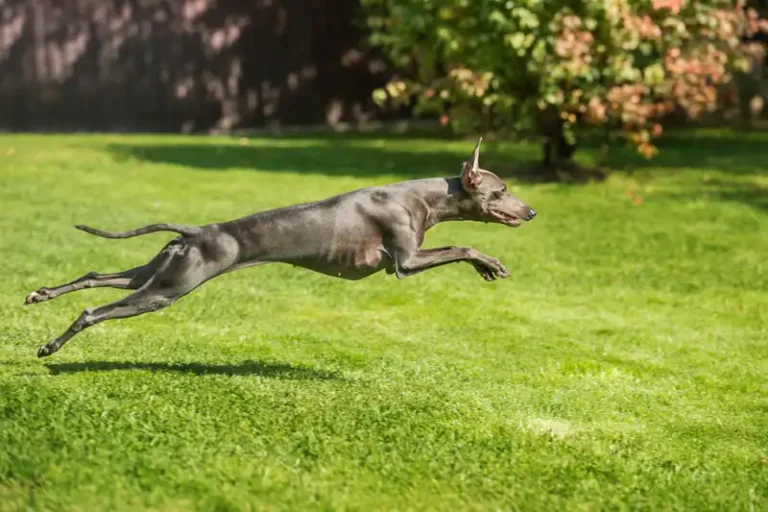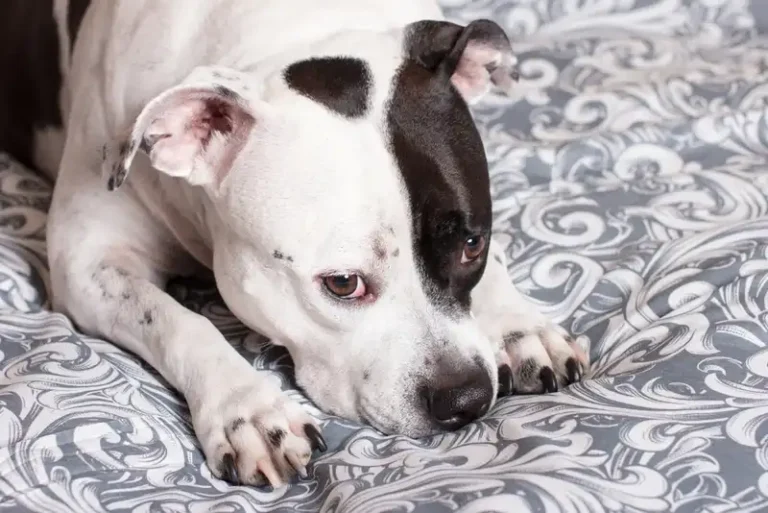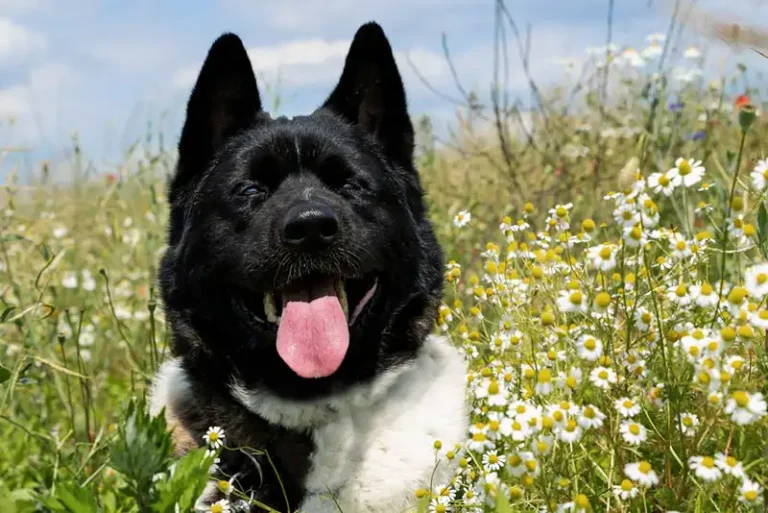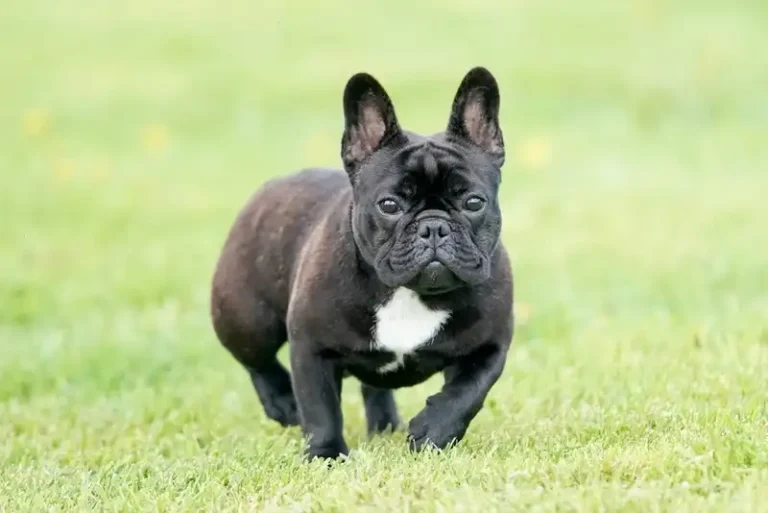History of the Golden Retriever Breed

The main prerequisite for the emergence of the breed was the eternal passion of English aristocrats for hunting. In the 19th century, the main entertainment of British and Scottish squires was hunting game and shooting ducks. Respectable peers spent days in the forests and swamps, bragging to each other about their trophies, guns and, of course, dogs. However, if the gentlemen had everything in order with hounds, then four-legged hunters who were able to find a shot quail in the heather or swim after a duck that fell into the lake were in great shortage. Commercial demand gave birth to supply, and soon shaggy dogs with an unusual golden coat color began to cut through the valleys of Scotland.
The emergence of golden retrievers as an independent breed is usually associated with the name of Dudley Marjoribanks, a Scottish lord and amateur breeder. It was he who introduced the world to a completely new type of hunting dog that was not afraid of water and masterfully retrieved a shot bird. For a long time, it remained a secret whose blood flowed in the lord’s charges, until in the middle of the 20th century, secret records of his stud books were made public. As it turned out, the genes of the goldens were given by the tweed water spaniel, labrador , bloodhound and flat-coated retriever. Moreover, the first offspring was obtained as a result of mating a tweed water spaniel and a flat-coated retriever, which had yellowish fur.
By the 1920s, the breed was already quite popular not only in Europe, but also among breeders in the New World. In addition, the USA and Canada had their own standards for the appearance of Golden Retrievers. For example, overseas they preferred individuals with a more intense and dark coat color. Descendants of Scottish Retrievers were brought to Russia after the collapse of the USSR, all from the same America. The first purebred dog arrived on the territory of the Russian Federation in 1991.
Golden retrievers are moderately pumped-up beauties with a soulful look and luxurious iridescent fur. Goldens owe their recognition not so much to their own charm, but to the efforts of marketers. American cinema was especially active in promoting the breed. It is enough to watch a couple of comedy melodramas produced in the USA to understand: if an American family ever decides to get a dog, then in 9 cases out of 10 it will be a golden retriever.
The sex type of this breed is clearly expressed. The average boy’s height fluctuates between 56-60 cm, and his weight can reach 41 kg. Girls are significantly lighter (average weight – 25-37 kg) and smaller than males (height – 51-56 cm).

Representatives of the first group are natives of Foggy Albion, with extremely massive paws and a wide skull. They are distinguished by a lighter color of fur, up to white. It is the English type that is most common in Europe and Russia. The build of the wards of American breeders is less impressive, but Golden Retrievers “made in the USA” can boast of an elegant posture and a generally more elegant appearance. At the same time, the shade of their fur is somewhat darker than that of their British counterparts. A distinctive feature of Canadian retrievers is a thin build with a fairly high growth. The color of the fur of the “Canadians” is even more saturated and darker than that of the “Americans”.
Head
The skull is massive, convex-angular. The transition from the forehead to the muzzle is distinct and smooth. The occipital protuberance is smoothed, the cheeks are flat. The animal’s muzzle is long, even, gradually tapering from the base to the nose.
Lips
Black, moderately dense and dry. The upper lip hangs noticeably over the lower lip, but does not extend beyond the jaw. The lips completely hide the dog’s teeth and gums, forming small folds at the corners of the mouth.
Jaws and teeth
The retriever’s jaws are strong and fairly wide, with a distinct scissor bite. The teeth are white and large. The incisors are aligned.
Nose
The earlobe is massive, mobile, black. The nostrils are wide open.
Ears
Moderately long, hanging, lowered along the cheeks of the animal. The base of the ear is wide, the tip is narrow, smoothly rounded. Set – slightly above the line of the eyes.
Eyes
Large, deep-set, rounded. The golden retriever has an intelligent, friendly look. The color of the iris is from brown to dark brown. The eyelids are black, dry, and fit tightly to the eyeball. An important condition: the whites of the eyes should not be visible in a dog looking straight ahead.
Neck
Massive, set high and of moderate length. Neck muscles are strong, developed, without folds or sagging.
Retriever family
Adults have a strong, tightly built body with prominent muscles. The back of golden retrievers is straight, with a convex loin and pronounced withers. The croup is massive, slightly sloping, rounded. The chest is of moderate width, quite deep. The tucked-up belly line ends in a short and well-tucked groin area.
Tail
Moderately long, with a wide, thickened base and a conical tip. It is located below the back. In a calm Golden, the tail is lowered, in an excited one it is raised to the level of the back.
Limbs
The forelegs are muscular, dry, and straight. The shoulders are strong, with massive shoulder blades and elbows set back and pressed to the body. The shoulder-scapular angle does not exceed 90°. The pasterns are strong but short, set at a slight angle.
The hind legs are strong, with well-developed muscles, and are set well apart. Golden retrievers have low hocks that point backwards. The front and back paws are medium-sized and rounded. The pads are massive, with short claws, and the animal’s toes are folded into a ball.
Wool
The Golden Retriever’s coat is extremely stiff and water-repellent. The hair is quite thick and lies close to the body, hiding a thick undercoat underneath. The structure of the coat can be straight or slightly wavy, and its length varies depending on the part of the body. The longest coat is located in the chest, ears, body, back of all four legs, and the lower part of the tail. The areas of the body with short hair are the head, paws, and front of the limbs.
Color
All shades of gold, up to the transition to cream color, are considered standard. Lighter tones are acceptable for feathering on the paws and tail suspension.
Possible defects
The list of breed defects includes any deviations from the characteristics prescribed by the standard. For example, it is undesirable for a golden retriever to have sparse and long hair, white stripes on the chest, and eyes that are too light and close-set. The following defects may be a reason to not allow an animal to compete:
square body;
long or too short legs;
malocclusion and crooked lower jaw;
cryptorchidism;
lips, eyelids and nose, painted in any shade except black;
white “scarf” on the neck and streaks on the forehead;
black color of the coat, as well as the presence of spots on it;
drooping tail.
Golden Retriever Personality

In terms of the number of enthusiastic reviews from owners, Golden Retrievers are almost ahead of all breeds. Indeed, only a convinced dog hater will be able to find shortcomings in these good-natured intellectuals. As for ordinary animal lovers, their Goldens literally charm them with their gentleness and phenomenal memory for faces. If one of your friends treated their pet to a treat or entertained him with a simple game, you can be sure that the retriever will not forget to add a fat “plus” to this friend’s karma.
Calm and balanced in everyday life, representatives of this breed try to keep up appearances even in the most delicate situations. They are completely non-confrontational and are ready to get along with any four-legged creature that does not show open aggression. Even in the most tense moments, goldens prefer to resolve the matter peacefully. A growling and dead-grip golden retriever is something out of science fiction.
The breed is often recommended for keeping in families with children, as the animals are extremely correct and patient with the younger generation. Of course, trusting a dog with babies is not the smartest decision, but playful three-year-olds can be left with her. Golden retrievers are primarily focused on people. It is with them that they want to go for walks, share their joys and sorrows. For this reason, goldens are often involved in active canistherapy. Shaggy “antidepressants” are happy to contact patients in a state of prolonged depression, charging them with bright emotions and gradually returning them to the joy of existence.
Golden retrievers are typical sanguine people, who are not at all characterized by such character traits as suspicion and caution. Strangers arouse curiosity and burning interest in these simple-minded cuties, so if a golden lives in your home, accept the fact that it will not be a guard of the territory and material values.
Education and training
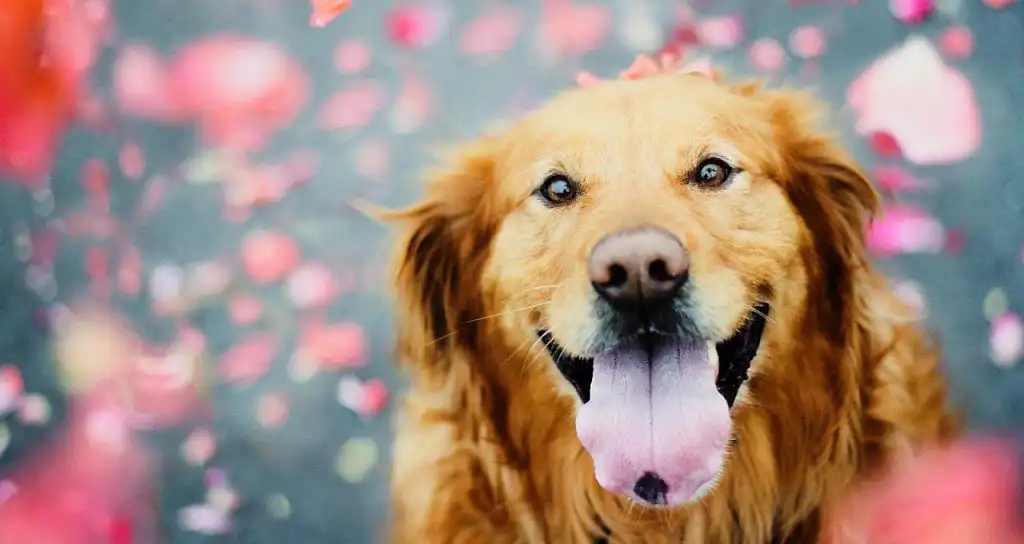
Golden retrievers are not deprived of intelligence and memory by nature, so the dog grasps any lessons on the fly. The first thing to start training a golden retriever puppy with is obedience: the animal must understand what is allowed and what is not. Do not give in to the momentary desire to remove all prohibitions and pamper the baby, so to speak, as an exception. The puppy’s pranks will quickly cease to seem cute and funny after a 40-kilogram dog begins to practice them.
In the first months of life, retriever babies try to taste the objects around them, so try to convey to your pet the meaning of the “No!” command as quickly as possible. Those who see a future hunter in a golden retriever will have to go out into nature more often. The dog will be able to learn to find and bring a shot bird only when it sees it in real life. At first, the skill is practiced on rags and dummies: a homemade stuffed animal is thrown at the puppy to make it want to grab an unfamiliar thing and show it to the owner. Then they smoothly move on to retrieving and participating in the hunt.
Six-month-old puppies can be taught to swim and obey a whistle, and it would be better if a professional did this. 12 months is the optimal age to start training the dog’s endurance, since during hunting it will often have to sit in ambush so as not to scare off the game. The “Lie down!” command is not used in such cases. It is enough for the pet to sit next to you. Memory training exercises are considered very valuable, since the golden retriever is not always able to find game only by smell.
Maintenance and care
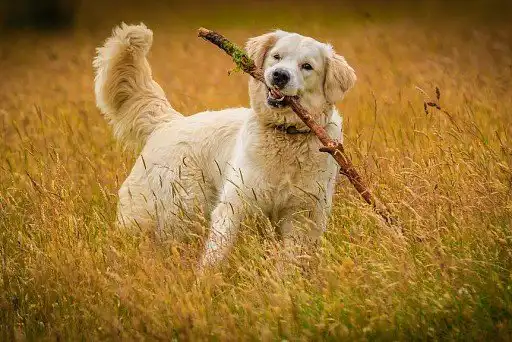
Despite the fact that the main specialization of golden retrievers has always been hunting, today’s owners of these shaggy “servicemen” do not necessarily need to take up a gun. Tiring runs through forests and swamps can easily be replaced by long walks in parks and meadows. It is great if you take the dog to a country house, away from the highway, where it can run to its heart’s content. Just do not think of turning your pet into a mongrel and settling it in a kennel: the retriever will not appreciate your impulse and will become despondent – so take the dog into the house and do not deprive it of your own company.
Keeping a Golden Retriever in an apartment is a kind of test of the owner’s responsibility and hard work, since the animal will have to compensate for the lack of free space, physical activity and impressions with regular walks in combination with physical exercise. Due to their sociable nature, Golden Retrievers do not cope well with loneliness. Animals splash out their insecurity and fear on the surrounding objects: they chew furniture and wires, ruin shoes. The worst punishment that the owner can come up with for a Golden is to lock it within four walls and calmly go to work. For careerists, workaholics, travelers and other busy individuals, a Golden Retriever as a pet is an unacceptable option.
Hygiene
The main problem for the owner of a golden retriever is the fur of his pet. During the shedding period, the golden leaves fluffy traces everywhere possible, and daily combing here helps little. There are only two ways out of this situation: do not buy a golden retriever at all or put up with this feature of the dog and buy a powerful vacuum cleaner to clean up the clumps from time to time.
Brush a shedding retriever twice a day using a brush and a hair collecting glove. Remove thick undercoat with a furminator or slicker brush. To remove the dog smell from the coat, you can wet it with a solution prepared according to the following recipe:
In periods between shedding, the animal’s fur does not require such careful care, but you will still have to go over the dog’s “fur coat” with a comb a couple of times a week. Goldens are given a bath once a month and this is quite enough. After bathing, the pet’s fur can be slightly shortened. The hair is cut in the direction from the bottom up, starting from the neck. It is not forbidden to go over the feathering on the paws and “pants” of the dog with scissors. The hair growing between the toes and at the base of the tail should also be trimmed regularly.
Most Golden Retrievers have problem-free eyes and ears, so a standard weekly check-up is enough. If dirt has accumulated in the ear funnel, it can be removed with a napkin and boiled water. Cooled tea leaves are suitable for treating the eyes. Cleaning a Golden’s teeth is a labor-intensive but necessary process. If you can’t clean the oral cavity in the classic way, you can entrust this task to dry food or special treats, whose hard particles act as abrasives that “erase” plaque.
Feeding
Golden retrievers can be fed both natural products and “dry food”. In the first case, about 50% of the diet should be animal protein, that is, meat. The daily norm of the product is calculated as follows: 10-20 grams of meat per kilogram of the dog’s weight. The remaining half of the retriever’s daily “menu” consists of cereals and vegetables.
The meat for the dog is selected to be lean, with a large number of veins and cartilage. Beef, lamb, rabbit and turkey are ideal. Offal is also not prohibited, but due to the digestive disorder that they can provoke, they are introduced into the diet gradually and little by little.
It is better to cook thick porridges from rice and buckwheat, to which you can add stewed vegetables. Pumpkin, carrots, cabbage, turnips and beets are especially useful for golden retrievers. In season, early greens are mixed into the porridge. It is not forbidden to include fermented milk products in the diet of an adult dog – kefir, yogurt, cottage cheese. Puppies, whose skeleton is still forming, need more calcium, so milk (whole and as part of porridge) is a must in the diet of little goldens up to 4 months.
Approximate daily menu for a 4-month-old baby: 300 g meat, 100 g fruit and vegetable slices or vegetable stew (apple + carrot), 500 g milk porridge.
How many times to feed
Up to 4 months, golden retriever puppies are fed 5 times a day. Starting from 5 months, babies are transferred to four meals a day. Six-month-old teenagers eat three times a day, and by 8 months, puppies completely switch to two meals a day.
Walking
Golden retrievers are walked for at least two hours a day. It is not at all necessary to maintain the same duration of walks. For example, the morning walk can be shortened to 30 minutes, and the evening one, on the contrary, can be increased to an hour and a half. If the animal lives in an apartment, then up to four months it should not be allowed to go up and down stairs on its own. Take the puppy out for a walk in your arms and bring it into the apartment in the same way.
Little ones are taken outside more often than adults to develop the skill of using an outdoor toilet. At first, excursions are conducted in park areas, gradually moving to busy city streets. It is very important that the dog does not fall into a stupor at the sight of people and the sounds of public transport, so the more often it encounters everyday phenomena of the urban environment, the faster it will learn to perceive them adequately.
Golden Retrievers and Water
Golden retrievers love water procedures, so during a walk the puppy will certainly try to measure the depth of the first puddle it comes across. Accordingly, if you notice a pothole filled with water on the way, it is better to prevent the animal’s impulse by taking it by the collar and reinforcing the prohibition with the command “No!” If the moment is missed, and the pet is already swimming in a puddle, shout at it (the same command “No!” will do) and throw the leash at it. Do not climb into the water and try to pull the dog out.
Wait until it obeys the command itself and praise it for obedience. But you should not refuse to swim in open water. Swimming in a pond, river or lake for a dog is gymnastics and psychotherapy in one bottle, so when going to nature for the weekend, feel free to take your Golden with you.

Golden Retriever Health and Diseases
For veterinary clinics, goldens are one of the most “profitable” pets, and their owners are among the most frequent visitors. The main diseases of the golden retriever, mentioned in almost every reference book, are retinal degeneration and hip dysplasia. However, in fact, the breed is also known to have about a dozen different ailments. For example, dogs are often diagnosed with cancer and heart disease, hypothyroidism, atopic dermatitis, von Willebrand disease and other dangerous ailments.
In addition, golden retrievers have a tendency to obesity. Compared to more serious diseases, excess weight seems like a harmless trifle, although in reality everything is not so rosy. Animals that have put on extra pounds live less, and individuals with excess body weight suffer more from the constant companion of all elderly dogs – arthritis. Diseased teeth of the animal also pose a serious danger. An ordinary abscess on the gum or an inflamed tooth can “spread” the infection throughout all the organs of the retriever, ultimately sending him off to dog heaven.
How to choose a puppy
When going to a nursery, arm yourself with a printout of the breed standard, or better yet, take a specialist with you who will help you choose a puppy. If this is not possible, contact any of the canine clubs, where they will recommend a reliable breeder to you.
Puppies inherit not only their appearance and hunting qualities from their parents, but also their temperament type, so when talking to the seller, insist on meeting the mother and father of the babies. If the buyer is refused such a favor, there is a high probability that the dogs’ pedigree is so-so.
Those who see a future family friend in a golden retriever are better off buying females, who are more docile and affectionate. Golden males are distinguished by their bright charisma, but their character is more serious and firm. In addition, boys are much smarter in everything that concerns hunting.
The temperaments of American and European retrievers differ significantly – take this fact into account when buying a puppy. Goldens from the USA are more energetic and emotional. Native “Europeans” are noticeably more phlegmatic and do not sin with hyperactivity.
Responsible breeders who value their own name have puppies that are well-groomed, vaccinated and treated with anthelmintic drugs.
How much does a golden retriever cost
The most attractive option in terms of price is still pet-class puppies: from 20,000 to 25,000 rubles. Almost invisible to the eye defects in appearance significantly “cut” the cost of a golden retriever, which will especially appeal to those who do not dream of exhibitions and championship titles and do not mind saving. Prices for show class start from 35,000 rubles and end at about 50,000 rubles. The option designed for the most generous buyers is offspring obtained from interbreeding, with the right to further breeding. The cost of such a puppy is 70,000 – 80,000 rubles.


